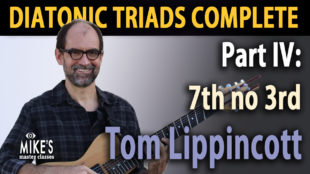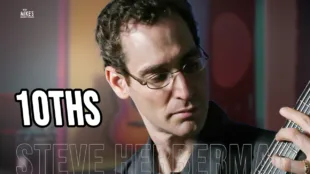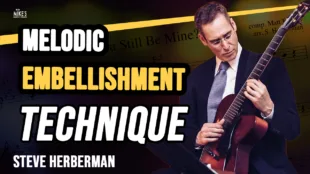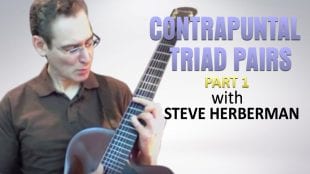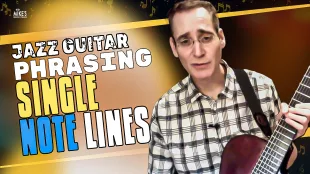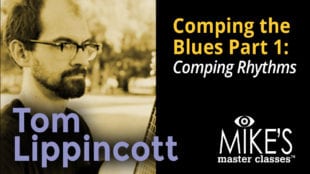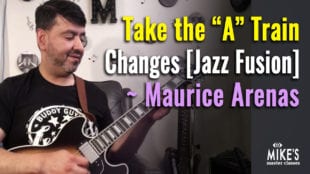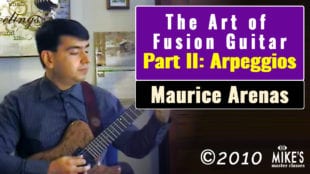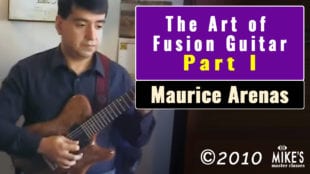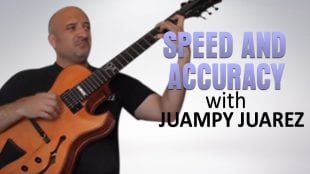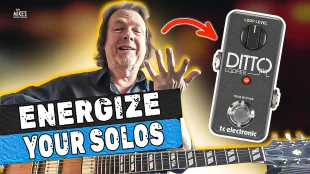![]() Jazz guitar is a constantly evolving art form, with new players and new ideas pushing the boundaries of the genre every day. In this article, we’ll explore five modern concepts for jazz guitar that are helping to shape the sound of jazz guitar in the 21st century.
Jazz guitar is a constantly evolving art form, with new players and new ideas pushing the boundaries of the genre every day. In this article, we’ll explore five modern concepts for jazz guitar that are helping to shape the sound of jazz guitar in the 21st century.
Extended Harmony
Extended harmony is a modern concept that involves using chords that go beyond the traditional dominant 7th and major 7th chords found in traditional jazz harmony. Extended chords include chords with 9ths, 11ths, and 13ths, as well as altered chords and chord substitutions.
By using extended harmony, modern jazz guitarists can create more complex and interesting chord progressions, giving their playing a more contemporary sound. To incorporate extended harmony into your playing, start by learning the basic extended chord shapes and experimenting with different chord progressions.
Recommended Modern Harmony Courses
Polyphonic Texture
Polyphonic texture is a modern concept that involves playing multiple lines or voices simultaneously on the guitar. This can be achieved by playing chords with multiple notes or by playing fingerstyle patterns that combine melody and harmony.
By using polyphonic texture, modern jazz guitarists can create a rich and complex sound that is reminiscent of a full band. To incorporate polyphonic texture into your playing, start by experimenting with fingerstyle patterns and arpeggios, and practice playing chords with multiple notes.
Polyphonic Textured Courses
Modern Rhythmic Concepts
Modern jazz guitarists are pushing the boundaries of rhythm, experimenting with complex rhythms and unusual time signatures. This includes using polyrhythms, odd time signatures, and metric modulation to create new and interesting rhythmic patterns.
To incorporate modern rhythmic concepts into your playing, start by practicing with a metronome and focusing on playing with precision and accuracy. Experiment with different time signatures and subdivisions, and try to incorporate polyrhythms and metric modulation into your playing.
Modern Rhythmic Courses
Fusion of Genres
Modern jazz guitarists are increasingly fusing jazz with other genres, such as rock, hip-hop, and electronic music. This involves incorporating elements of these genres into jazz compositions and improvisations, creating a unique and contemporary sound.
To incorporate fusion of genres into your playing, start by listening to and studying jazz fusion artists, such as John McLaughlin and Pat Metheny. Experiment with incorporating elements of rock, hip-hop, and electronic music into your playing, such as distortion and effects pedals, hip-hop beats, and electronic soundscapes.
Courses Involving Jazz Fusion
Modern Technology
Finally, modern jazz guitarists are using technology to enhance their playing and create new sounds. This includes using effects pedals, digital audio workstations, and looping devices to create layered and complex compositions.
To incorporate modern technology into your playing, start by experimenting with different effects pedals and software plugins. Learn how to use looping devices and digital audio workstations to create layered compositions and soundscapes. By using technology, modern jazz guitarists can create new and innovative sounds that push the boundaries of the genre.
Using Technology in Jazz
These modern concepts for jazz guitar are helping to shape the sound of jazz guitar in the 21st century. By incorporating extended harmony, polyphonic texture, modern rhythmic concepts, fusion of genres, and modern technology into your playing, you can create a unique and contemporary sound that reflects your own musical vision.


